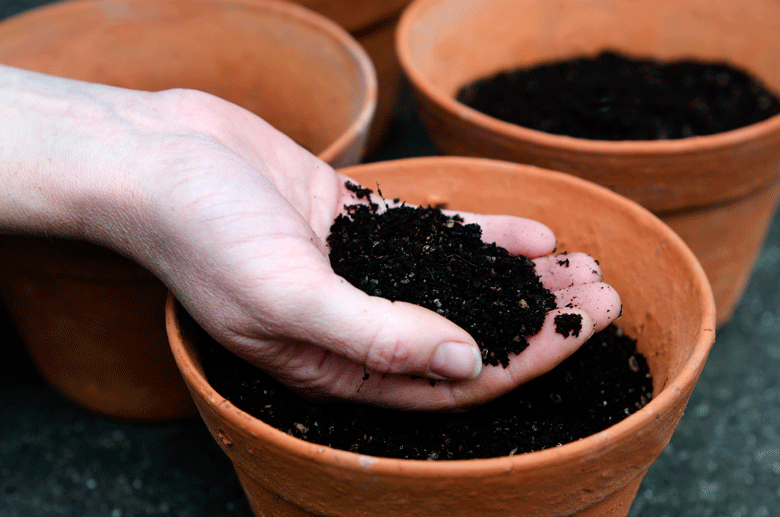
Finding the best way
To find the best way to grow Chillies, I decided to have a detailed look into every aspect of growing them. I explored all things Chilli in greater detail. This included seeds, potting mixes, and watering. I also touched on fertilisation. The exercise focuses on starting seeds and what happens after they have germinated. It then continues to when they are potted on for the first time. In time, the series will be expanded to include a detailed look at what needs to be done when the weather warms up.
This project is being run alongside my venture into growing Rocotos. These are Chillies I am growing for the first time. It made sense to do it in this way, because each step of the growing process is recorded. The Rocoto seeds were planted about a month ago and are currently young seedlings. Some have already been potted on for the first time. This makes these Chillies the ideal choice to use as the testing ground to implement my newly gained knowledge
While I believe my previously published posts on seeds, potting mixes and watering have covered many of the bases, there are still gaps. I am now looking to join the dots. To achieve this, I aim to explore answers to things I am still considering. I also want to verify the thinking behind decisions I have already made. It will also cover aspects like growing temperatures and other factors that I have not already dealt with. In this way, I aim to improve my Chilli growing technique and learn more about this fascinating subject
Starting from the beginning.
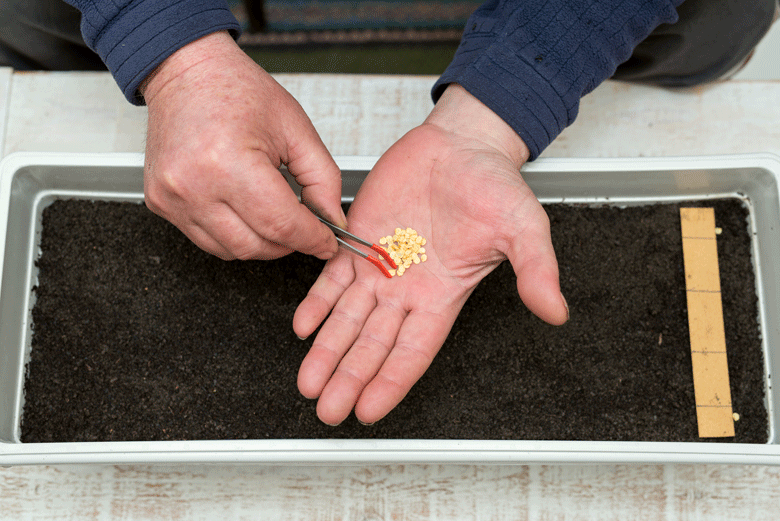 What’s happened so far?
What’s happened so far?
The Rocoto Chilli seeds were selected and purchased. They were planted into a mixture of seed starting compost and vermiculite spooned into eggshells. The seed-filled eggshells were placed in a propagator with the temperature set at between 26 and 29 degrees Celsius. The seeds germinated and were immediately removed from the propagator. The seedlings were then placed under grow lights. Some seedlings have developed their first set of true leaves and have already been potted on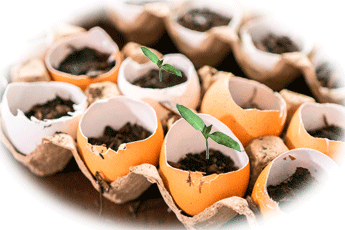
So far, so good. That’s where we are at this moment. This is where the new detail starts kicking in, and gaps start revealing themselves. It’s time to try and fit all the pieces together.
The first of these gaps concerns water. I previously used tap water to keep the seeds and seedlings watered. That has changed. From now on, I will only use purified water or rainwater. My research has revealed that ordinary tap water contains salts and minerals that inhibit healthy plant growth. I want to prevent this by using purified water.
The question is whether a specific type of purified water needs to be used. Is it distilled, deionized or reverse osmosis purified water that most fits the bill? What about rainwater? Is there perhaps an optimal combination of two (or even three) types? In other words, I am looking to develop a water profile that is best to grow Chillies. I also want to find the best way to approach this without a big investment in water purification equipment right now.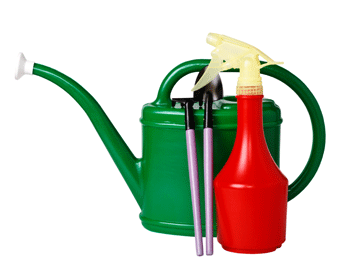
To start with, rainwater is probably the best bet. It doesn’t contain any of the salts and minerals harmful to plant growth. It’s also free. The only problem here is that unless you have specialist collection units, it is difficult to have collected enough when you need it the most. This is not a problem when you are potting on a few seedlings, but it will undoubtedly represent a problem down the line when the plants get bigger
Finding out what the best combination of water for growing Chillies is will almost certainly be a study in itself. So, as an interim measure, I have decided to only use rain water or deionised water. The deionised water is not something I will need to buy, as I already have some
I will use this to water my seedlings until they are ready to be hardened off. There will certainly be enough rain to fall before then, so I am pretty sure I will have enough to keep me going. If not, I can always fall back on my deionised water. After that, I must either invest in water purification equipment or think of something else. I certainly won’t be able to rely on rainfall alone, particularly in the summer.
What else needs consideration?
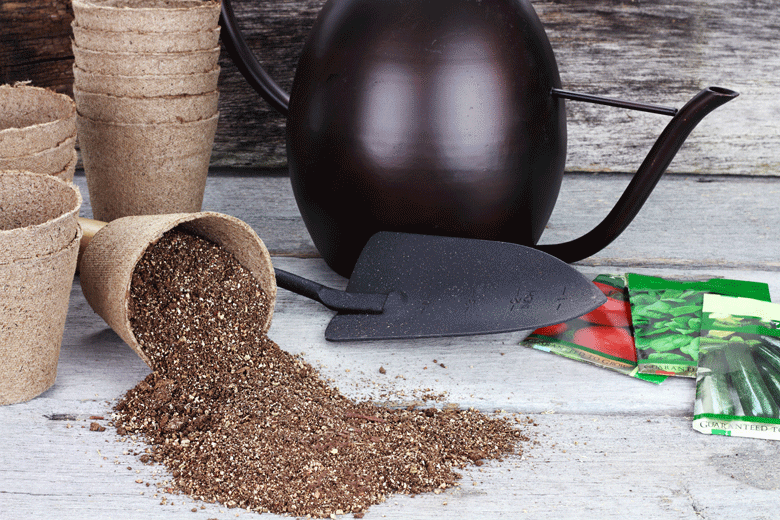
Potting compost
The next gap concerns the make-up of my potting soil. Why did I choose the components I did to make this type of mix? For example, why did I use Coir rather than vermiculate? Why did I select perlite over vermiculite? What was the thought process behind the base compost?
To answer that needs to be the core of what Chillies need in a potting mix. Firstly, it needs to be a mixture that is not too dense. The roots of the plant don’t want to struggle to grow in a medium. The potting soil should provide a firm enough base to be without being restrictive. Chillies also need a mixture that holds just enough water and nutrients. The seedlings don’t want to be overwatered or over- fertilized. Finally, they need air to survive. If a mixture is too dense, it will starve them of much needed aeration
I believe the potting mixture I have put together delivers precisely that. Coir can absorb up to ten times its weight in moisture. It also absorbs nutrients from the potting compost and any fertiliser I might add. This means the roots of the plants have easy access to nutrients and moisture when they need them. As an added benefit, Coir provides air to the soil. This is an essential requirement for healthy seedling growth. Vermiculite could have provided similar benefits in terms of water retention delivery. I chose Coir; however, above vermiculite it because it has anti-fungal properties and can help expel some pests.
Perlite delivers a similar benefit to Coir in its aeration qualities. Its main purpose in this mix is to aid drainage. It can happen that seedlings are given too much water. It is very easy to do. (ask me, I know)! Adding Perlite will ensure that seedlings are not swamped in a pool of water. It does have some water retention properties, but not as much as vermiculite, though. That that is not why perlite was added to the mix. It was added purely for its drainage properties.
The final part of the potting mix equation is the general-purpose potting compost. This is the element that delivers body to the mix. It also adds nutrients that the seedlings will need to grow. These nutrients, however, don’t last forever. This will need to be replenished at some point. This is where fertiliser enters the equation
Fertilizer
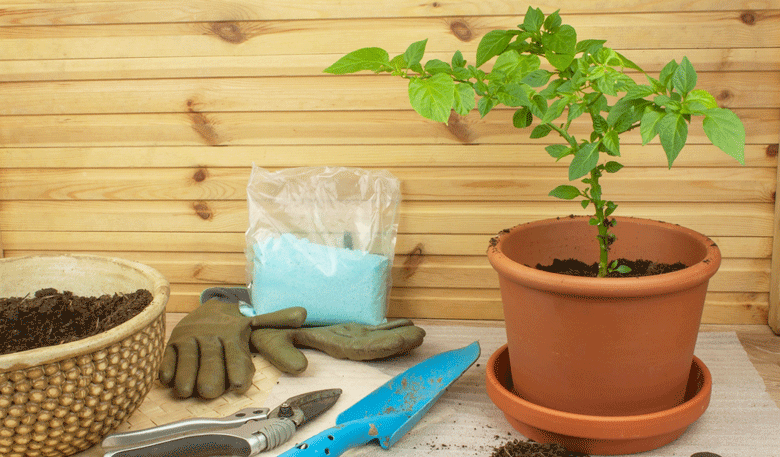
When should Chillies get fertilizer?
Up to the stage where seedlings get their first set of true leaves, they don’t need any extra fertilisation. They get their nutrition from the seed they have sprouted from. Seed starting compost purposefully doesn’t contain much fertiliser precisely for this reason. After seedlings have developed their first set of leaves, however, they need to be potted on. Seedlings should be potted into soil that provides some nutrition. They should also receive supplemental fertilisation after a couple of weeks.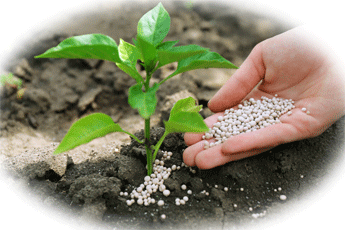
When my seedlings are still young, I feed them Chilli Focus, which has been diluted to 2.5 ml per litre of purified water. I do this at every second watering. As the plants grow, I start increasing the dosage until I reach a dosage of 5ml per litre. It will take roughly six weeks for this to happen. I will then continue feeding the plant at this dosage (even during intermittent repotting) until I do the final potting-on
The fertilizers I use once the plants have been hardened off are different to Chilli Focus. I use Vitax Q 4 to prepare the soil for final potting on. Once the Chillies start getting buds, I change to Chempak 4 to promote flowering and fruit set. This year, however, I will also try something else. I got some horse manure from a friend. I am making sure it is well rotted, and will use some of it in a new mix I am considering experimenting with for final potting on.
By final putting on, I mean the last time I pot on Chillies for a season. The plants are transferred into the pots they will spend the rest of the season in. They are hardened off in one litre or slightly bigger containers, and then transferred, depending on their final size, into ten, twenty or even fifty litre pots.
Something else I’ll be trying for seed starting next year is worm castings. I only recently came across this fertilizer, and I hold high hopes it will be a fantastic addition to my seed starting
Final note
The final aspect that requires covering is the optimum temperature at which seedlings need to be kept. Rocotos are cold weather-resistant, so they can take colder temperatures. However, most Chilli seedlings require a temperature of between 20 and 25 degrees Celsius if they grow vigorously. To achieve this, a heating mat will be required, or they must be kept in a warm room. The plants should also be kept under grow lights or on a sunny window for at least 12 hours a day. It is however essential that they also have a period of darkness, as this will do most of their growing. The dark period needs to be a minimum of eight hours.


